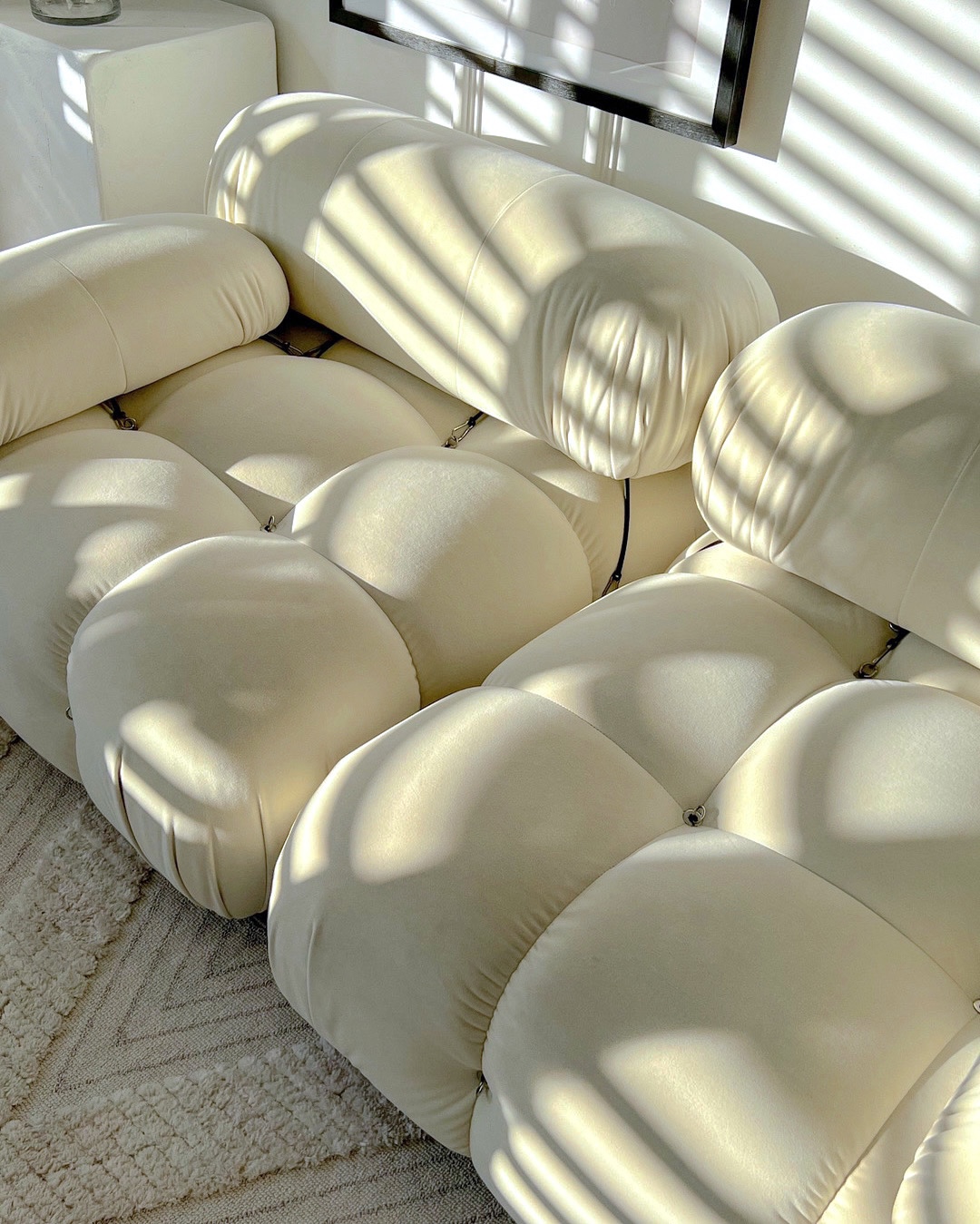
The mid-18th century in Europe was a period poised for a seismic shift in artistic sensibility. The prevailing Rococo style, with its whimsical asymmetry, ornate decoration, and pastel frivolity, had begun to feel distinctly out of step with the intellectual currents of the time. This era, often referred to as the Age of Enlightenment, championed reason, logic, and a return to perceived classical virtues. It was against this backdrop that Neoclassicism emerged, not merely as a stylistic preference, but as a philosophical statement, a quiet revolution in taste that sought to restore order to the decorative arts.
A Classical Awakening: The Genesis of a Refined Aesthetic
The intellectual climate of the Enlightenment fostered a renewed appreciation for rational thought, intellectual clarity, and moral rectitude, contrasting sharply with the sensuousness and perceived moral laxity of Rococo. Philosophers and thinkers of the era believed in controlling destiny through reason and adherence to natural laws. This intellectual shift created fertile ground for an art movement that valued order and restraint, seeing in classical antiquity a reflection of their own enlightened ideals. Neoclassicism arose as a direct counterpoint to the Baroque and Rococo periods, which were increasingly seen as excessively ornate and decadent. Rococo’s emphasis on grace, ornamentation, and asymmetry was consciously rejected in favour of simplicity and symmetry, virtues associated with ancient Greek and Roman art. This stylistic divergence was also a reflection of changing societal values, moving away from the perceived excesses and aristocratic disconnectedness that Rococo had come to embody.
A powerful catalyst for the Neoclassical movement was the systematic rediscovery and excavation of ancient Roman cities, most notably Pompeii and Herculaneum, starting in the late 1740s. These archaeological finds offered tangible insights into classical interiors and forms, inspiring a desire for archaeological exactness in reproduction. However, the true transformation lay not just in discovery, but in the widespread dissemination of this knowledge. Publications featuring exquisite engravings of ancient buildings, such as Robert Wood’s The Ruins of Palmyra and Giovanni Battista Piranesi’s Veduti di Roma, widely broadcast these classical forms across Europe, making the splendour of distant ruins accessible to a far wider audience. This propagation of classical imagery extended the reach of ancient ideals beyond the exclusive circles of Grand Tourists and scholarly antiquarians, allowing artists, architects, and patrons across the continent to engage with and replicate classical principles. This shift from exclusive, aristocratic appreciation to a more widespread, albeit still elite, cultural movement, laid the groundwork for its influence on decorative arts and interiors, enabling Neoclassicism to rapidly become an international style rather than remaining confined to academic or archaeological pursuits.
The Enlightenment’s Imprint: Reason, Clarity, and Form
The philosophical ideals of the Enlightenment were not abstract concepts but tangible forces that shaped the very fabric of Neoclassical design. The emphasis shifted from emotional drama to intellectual appeal, from elaborate illusion to rational order. Neoclassical design prioritised logical composition, clear structures, and mathematical proportions to achieve visual harmony. It valued controlled, precise execution, seeking intellectual appeal over emotional or sensual impact. The goal was to convey a sense of order, stability, and cultural continuity, reflecting the optimism of a changing world.
The movement celebrated classical virtues such as reason, order, harmony, and beauty. Art and design were seen as having a moral and didactic function, meant to educate and uplift society by portraying noble character and civic responsibility. This was a deliberate move away from the “frivolous sensuality” of Rococo, which was often criticised as an “immoral” style associated with aristocratic extravagance and disconnectedness from social realities. Neoclassical design, by contrast, promoted “noble simplicity and calm grandeur”, consciously positioning itself as a visual manifestation of a more virtuous and rational society. This moral dimension endowed Neoclassicism with a powerful cultural authority, facilitating its adoption as the preferred style for public buildings and institutions that sought to embody ideals of liberty, justice, and reason, thereby influencing not just private homes but also expressions of national identity.
In direct opposition to the ornate excesses of Baroque and Rococo, Neoclassicism championed simplicity and restraint. This manifested in clean lines, simple geometric shapes, and a reduction of excessive ornamentation, relying instead on the beauty of proportion and scale.
Anatomy of Elegance: The Hallmarks of Neoclassical Interiors
Neoclassical interiors are characterised by a meticulous attention to detail, where every element contributes to an overarching sense of balance and refined sophistication. The style is a masterclass in controlled opulence, utilising classical forms and luxurious materials with a discerning hand. Symmetry and proportion are the bedrock of Neoclassical interior design. Rooms are typically arranged with equal visual weight on either side of a central axis, creating a harmonious and visually pleasing environment. Furnishings and architectural elements are carefully measured and scaled to ensure coherence and balance. Symmetrical floor plans, evenly spaced windows, and balanced ornamentation are essential components.
Interiors often feature elements inspired by ancient Greek and Roman designs. Columns, pilasters (half-columns integrated into walls), and friezes are common, often in Doric, Ionic, or Corinthian orders. Decorative motifs include urns, swags, festoons, medallions, scrolls, and garlands, harmoniously balanced within classical proportions. Wall panelling and decorative architectural mouldings are prevalent, adding grandeur and structure to spaces. The palette is generally light and airy, dominated by whites, creams, and soft pastels like powder blue, pale green, soft lilac, and warm coral. These hues create a sense of spaciousness and elegance, allowing natural light to flow freely throughout the space. Luxurious materials are paramount: marble, gilded wood, bronze, crystal, and fine fabrics such as silk, brocade, and damask. Polished wood or marble floors further enhance the refined atmosphere.
Furniture pieces are refined and understated, often featuring clean lines, classical motifs, and a sense of symmetry. Leading cabinetmakers of the era, such as George Hepplewhite and Thomas Sheraton, whose influential pattern books disseminated a lighter, more elegant style, embraced these ideals. Their designs, often crafted from dark woods like mahogany and rosewood (sometimes with brass inlays), introduced crisp, geometric forms and slender tapered legs. Hepplewhite’s celebrated shield-back chairs, often detailed with carved urns, Prince of Wales feathers, or wheatsheaves, epitomise the era’s graceful seating. Sheraton, conversely, favoured more rectilinear forms, creating delicate open-backed chairs with reeded or fluted legs. Beyond seating, commodes became understated rectangular forms adorned with classical marquetry, while elegant demilune or rectangular console tables, often featuring slender, fluted legs or delicate inlay, were popular for hallways and reception rooms. Robert Adam himself conceived furniture as an integral part of his unified interiors, ensuring each chair, table, or cabinet perfectly complemented the architectural shell. Elegant chairs, tables, and cabinets might feature lyres, urns, sheaves of wheat, and floral garlands. Accessories include Roman-style busts, sculptures, ornate mirrors (often gilded or oval), and classical chandeliers and sconces. The detailed descriptions of symmetry, proportion, and impeccably curated elements reveal that Neoclassical interiors achieve their purity and elegance through an almost obsessive attention to detail and a strict adherence to classical rules. This is not accidental beauty; it is a highly controlled and intellectualised aesthetic. The restrained quality implies a deliberate withholding of excessive ornamentation, making the chosen details all the more impactful. This calculated perfection creates an atmosphere of calm grandeur, a sense of timelessness that transcends fleeting trends. The purity is not merely visual but intellectual, reflecting the Enlightenment’s belief that truth and beauty reside in order and reason.
The Grand Tour’s Influence: A Continent Embraces Antiquity
The Grand Tour, a customary journey through Europe undertaken by aristocratic young men, played a pivotal role in disseminating Neoclassical ideals and shaping taste across the continent. It was a firsthand education in classical antiquity, influencing not only architectural styles but also the very objects that furnished the most fashionable homes. Wealthy Europeans, particularly British art students, returned from Italy with newly rediscovered Greco-Roman ideals. They acquired antiquities and art, often viewing private collections as museums were rare. These treasures, from sarcophagi to classical statuary, were then installed in their country houses, directly influencing interior schemes.
Architects like Robert Adam, who travelled extensively in Italy and Dalmatia, observed classical ruins and synthesised these influences into a new, lighter, and more elegant style. His Works in Architecture, published in instalments between 1773 and 1779, made his designs widely available across Europe. Adam’s style, known as Adamesque, revolutionised 18th-century interiors, integrating classical elements with fluidity and grace. He paid unwavering attention to every detail, from walls and ceilings to furniture and carpets, creating unified schemes. This Grand Tour experience was more than tourism; it was a structured educational journey for the elite. The direct exposure to classical ruins and the subsequent acquisition of antiquities established a direct connection where personal experience and collected objects translated into a widespread design movement. The publications by Adam and, indeed, Josiah Wedgwood, then amplified this influence, moving it from aristocratic homes to a broader, aspirational market, transforming a scholarly interest in antiquity into a dominant aesthetic that permeated all levels of design, from grand architectural schemes to everyday decorative objects.
Beyond individual patrons and architects, entrepreneurs like Josiah Wedgwood played a crucial role. His jasperware, featuring white bas-relief designs against coloured backgrounds, directly adapted classical motifs from publications like Sir William Hamilton’s collection of antiquities. Wedgwood industrially promoted Neoclassical taste through trade catalogues, making classical aesthetics accessible to a broader market. Even established designers like Thomas Chippendale, initially known for Rococo, Chinoiserie, and Gothic styles, adapted to the Neoclassical trend in his later designs. He incorporated classical elements into his work, partnering with Robert Adam and reprinting his famous Director with Neoclassical additions, indicating a broader shift in interior design rather than just furniture.
Neoclassicism in Australian Design
The influence of Neoclassicism, an international style, naturally extended to Australia, particularly during the 19th century as European architectural trends were imported. While early colonial interiors were often simpler, influenced by Georgian and Victorian styles, the classical language found expression in public and grand residential buildings. Structures such as Elizabeth Bay House in Sydney, a Greek Revival villa completed in 1831, exemplify this, with its oval domed saloon, fluted pilasters, and laurel wreath cornices directly referencing classical forms. Other notable examples of Neoclassical architecture from the period include various Town Halls, Customs Houses, and General Post Offices across cities like Adelaide, Melbourne, and Sydney. The historical presence of Neoclassical architectural styles in Australia, particularly in public buildings and some grand residences, suggests a direct transplantation of European trends.
In contemporary Australian interiors, while overt Neoclassicism is less common, its principles are subtly reinterpreted. A “Modern Classical” design trend is emerging, blending traditional elegance with contemporary functionality. This manifests in symmetrical façades, grand columns, and decorative details, often paired with light, neutral palettes, curved forms, and natural materials like stone, timber, and brass. Australian designers are increasingly incorporating “Heritage Revival” elements, celebrating period features like ceiling roses and ornate cornices, updating them with modern finishes and classic tapware, demonstrating a continued appreciation for the order and considered luxury that Neoclassicism championed. This contemporary reinterpretation, rather than a strict revival, demonstrates the adaptability of Neoclassical principles. Instead of being a rigid historical style, its core tenets of order and elegance are flexible enough to inform contemporary aesthetics, proving its lasting appeal and relevance in diverse cultural contexts, including Australia’s unique design landscape.
A Legacy of Considered Luxury
Neoclassicism, born from an intellectual and artistic yearning for order amidst the perceived chaos of its predecessors, continues to resonate in the contemporary design landscape. Its principles offer a blueprint for creating spaces that exude an undeniable sense of calm and sophistication. The appeal of Neoclassicism lies in its ability to evoke a sense of timelessness and elegance, providing a functional yet refined framework for design. Its emphasis on balance, proportion, and clarity ensures that Neoclassical spaces feel inherently harmonious and considered, rather than simply fashionable.
In a world often saturated with fleeting trends, there is a growing desire for interiors that feel intentional, grounded, and collected. Neoclassical design, with its focus on deliberate composition and high-quality materials, offers precisely this antidote. It allows for a layered aesthetic that feels personal and meaningful, rather than overly ornate or ostentatious. The very essence of Neoclassicism, its rejection of excess and frivolity and its focus on timelessness, positions it as a counter-narrative to the rapid cycle of modern design trends. It offers a sense of permanence and cultivated taste. For those seeking luxury interior design, Neoclassicism represents a strategic choice, an investment in style that transcends seasonal fads, offering a promise of lasting value and a cultivated aesthetic that speaks to intellectual discernment rather than mere display. While grand in its origins, contemporary interpretations of Neoclassicism demonstrate a nuanced approach. It is about integrating elements – a classical bust, a fluted column, a curved leg – to bring a sense of order and romance to a modern space. This allows for a blend of old and new, creating interiors that are elevated without being showy, artistic without being overtly theatrical.
This commitment to classical virtues, translated into domestic environments, offers more than mere aesthetic pleasure; it provides a sanctuary of refined thought and tranquil beauty. In an age where digital clamour often dominates, the ordered grace of Neoclassical interiors stands as a testament to the enduring power of considered design, reminding us that true elegance, like truth itself, resides in clarity, balance, and an unwavering respect for the foundational principles of art. To embrace Neoclassicism today is to choose not just a style, but a philosophy – a refined awakening for the home, where every element contributes to a timeless narrative of order, beauty, and intellectual repose.
Further Reading
Harris, Eileen. The Genius of Robert Adam: His Interiors. Yale University Press, 2001.
Honour, Hugh. Style and Civilization: Neo-Classicism. Penguin, 1991.
Irwin, David. Neoclassicism. Phaidon, 1997.
Musson, Jeremy. Robert Adam: Country House Design, Decoration & the Art of Elegance. Rizzoli, 2017.
Listri, Massimo. Villa Albani Torlonia: The Cradle of Neoclassicism. Rizzoli, 2021.



